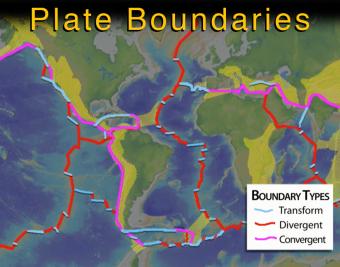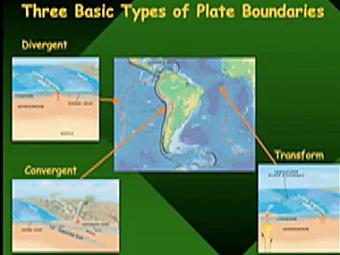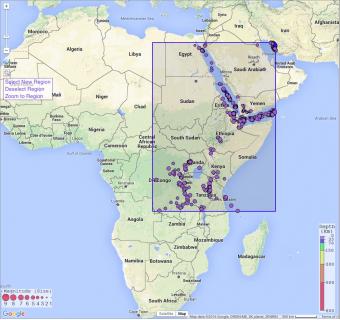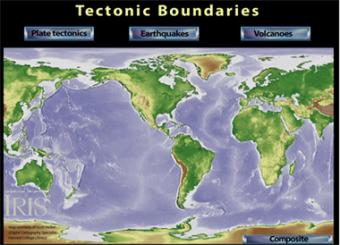Date: September 29, 2016 6min 40s Novice Spanish Greek

What are the lithospheric plates and how do they interact?
The cool, rigid outer layer of Earth is highly fractured. In most places, huge chunks or pieces of this rigid outer layer, called plates, are in continuous motion. Plates can range from 50 km to 200km thick. Continental plates are thicker and less dense than oceanic plates that are formed at spreading ridges.
Viewers will learn to define a tectonic or lithospheric plate; differentiate between continental and oceanic plates; differentiate between the 3 types of plate boundaries; and learn about the generalized seismicity associated with boundaries.
CLOSED CAPTIONING: A .srt file is included with the download. Use an appropriate media player to utilize captioning.
Discovery
CLOSED CAPTIONING: Please use the "CC" option on our YouTube version:
https://youtu.be/Xzpk9110Lyw

Video lecture covers three basic types of tectonic plate boundaries.

In this exercise, students will learn about the various types of plate boundaries, investigate well-known examples of some of these boundaries, and then apply what they have learned to East Africa to determine the most likely cause of seismicity in this area of the world.

Interactive map of tectonic plates from the US Geological Survey plate tectonic map reveals the plate names when you scroll over the plate. Scrolling over green button shows relative motions.

How are the tectonic plates related to earthquakes and volcanoes?
Interactive relief and bathymetric map reveals tectonic plates, as well as world-wide earthquakes and volcanoes.